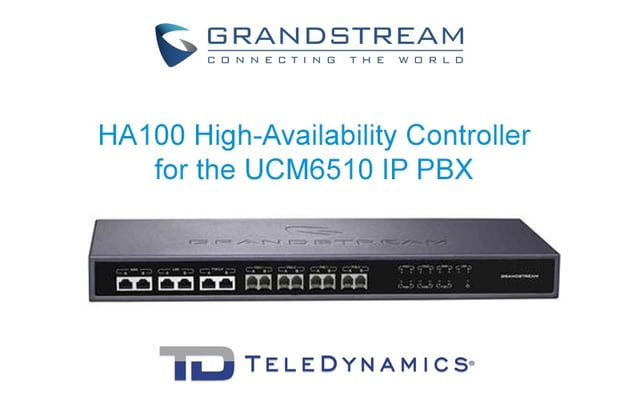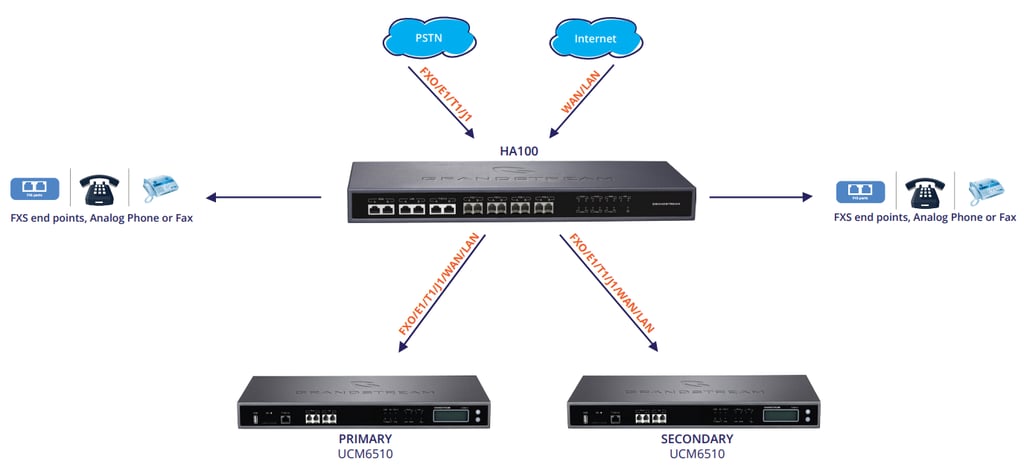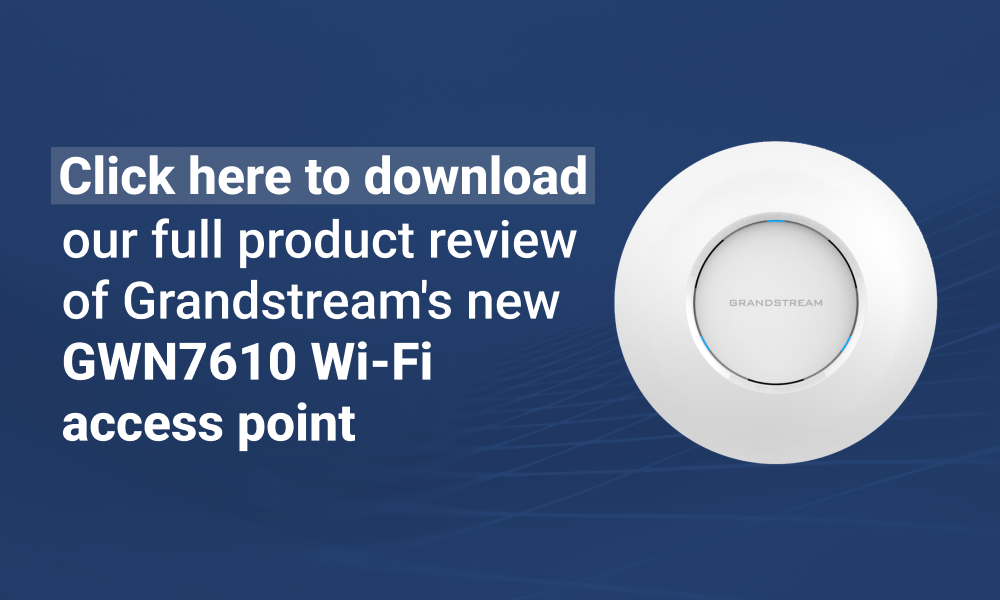Product review

Grandstream recently launched an automated failover solution for its UCM6510 IP PBX using the HA100 high-availability controller. The HA100 couples two UCM6510 IP PBXs into an active/hot-standby configuration which, in the unlikely event of a failure, automatically switches system control from the failed device to the hot-standby device.
Grandstream’s UCM6510 is an innovative IP PBX appliance delivering enterprise-grade unified communications to large organizations as well as to small- and medium-sized businesses. Supporting up to 2,000 SIP endpoint registrations and up to 200 concurrent calls, it provides a feature-rich experience, as well as security and reliability.
While Grandstream’s UCM6510 is a robust and well-designed IP PBX appliance as a standalone installation, the additional advantages provided by the HA100 for high availability are too noteworthy to ignore.
Importance of high availability
For most businesses today, telecommunications infrastructure and services comprise the second- or third-largest operational cost within the annual budget after payroll and, in the case of retail or wholesale businesses, procurement. This shows how important telephony and internet connectivity are to the success of modern businesses. In particular, organizations that maintain contact centers and help desks, many of which function 24/7 all year round, rely heavily on the robustness of their telecom systems to be profitable and cost-effective.
No system is infallible, however. Although highly unlikely, network components can and do fail. In the event of such a failure, mechanisms should be in place to almost instantaneously and automatically provide backup systems to take over. For this reason, it is important to invest in systems such as the HA100 that provide the level of high availability necessary for the business to remain profitable even in the midst of system failures.
Key features
The HA100 constantly monitors the operational status of two UCM6510 IP PBXs and automatically switches system control, including T1/E1 lines, network links and all registered SIP endpoints from the failed IP PBX to the hot-standby secondary IP PBX. This switchover can be achieved in anywhere from 10 to 50 seconds, depending on the number of registered devices. Additional essential features include:
- Supports up to two T1/E1 lines
- Two LAN ports
- Two WAN ports
- Two RS-435 ports for connectivity with primary and secondary UCM6510s
- Four FXS for analog devices
- Four FXO ports for PSTN connectivity
How it works
The HA100 device sits between two UCM6510 IP PBX appliances. Each appliance is connected to the HA100 and is independently controlled via an RS-485 serial connection, through which the status of each appliance is continually monitored and through which control communication occurs. All of the network links of each IP PBX are then physically connected to the HA100 including all T1/E1 lines, WAN and LAN connections and any analog FXS or FXO ports. The HA100, in turn, is connected to the PSTN, the IP network, the internet, and to any analog FXS or FXO connections.

In this way, the HA100 acts as a large physical switch, where all of these connections are relayed to one of the two UCM6510 devices. If the primary one fails, the HA100 automatically switches over all T1/E1, FXS, FXO, LAN and WAN connections to the secondary UCM6510 device. At the same time, the HA100 will direct the secondary UCM6510, which has now become active, to send what is called a Gratuitous ARP to all registered SIP endpoints informing them of its own MAC address. This causes all the SIP endpoints to direct any further SIP server communication to the now active appliance.
Synchronizing configurations
A vital component of this procedure is the continuous synchronization of configurations between the two appliances. For example, if a new telephone was provisioned on the IP PBX, the configuration for this device must exist on both the primary and secondary IP PBX. Administrators can configure the changes on the primary device, and the HA100 will duplicate those changes on the secondary device. This ensures that all configurations are up to date and will function even if a failure occurs just moments after a configuration change.
Not merely a matter of convenience
To gain a better understanding of what the HA100 provides, it may be helpful to go through what it would take to produce the same results in the event of a failure if you didn’t have the HA100. Here’s what you would need to do:
- Maintain an updated backup configuration of the primary UCM6510 every time you make a change, and save it in a safe place.
- If the primary UCM6510 fails, obtain a secondary UCM6510 device “out of the box” and upload the backed-up configuration to it.
- Disconnect the failed primary device from the T1/E1, LAN, WAN and analog connections.
- Connect the newly configured secondary UCM6510 device to all the T1/E1, LAN, WAN and analog connections.
- Wait for an undetermined amount of time before all SIP devices attempt to reregister with the new server. This may take anywhere from several minutes to several hours and depends on a variety of factors.
In order for the above to work, you would have to diligently maintain an up-to-date backup of the configuration and keep an extra UCM6510 in storage. Also assumed is that at the time of failure, someone will be there to make all the changes immediately and that that person will have access to storage to obtain the second UCM6510, as well as know where the physical connections are and where the backup configuration is kept.
The above mental exercise emphasizes not only the convenience offered by the HA100, but also the importance of the high availability mechanisms it provides. With the HA100, all of these procedures are automated, including the synchronization of configurations, the physical switchover, and immediately notifying SIP endpoints of addressing changes. All of this happens automatically in less than 50 seconds, even if it takes place at 3:00 a.m. on Christmas morning!
CONCLUSION
For companies requiring that next level of guaranteed availability in their telephony systems, the mechanisms provided by the HA100, coupled with the rich feature set of the UCM6510, make a brilliant combination for protecting profitability and business continuity.
You may also like:
Achieve high availability without high cost!
Get high throughput without high cost using Peplink's Balance Router
Should your business go all-IP?







Add a Comment: